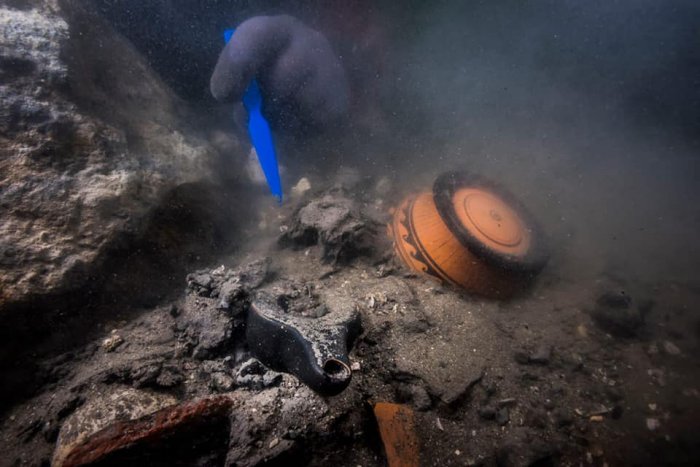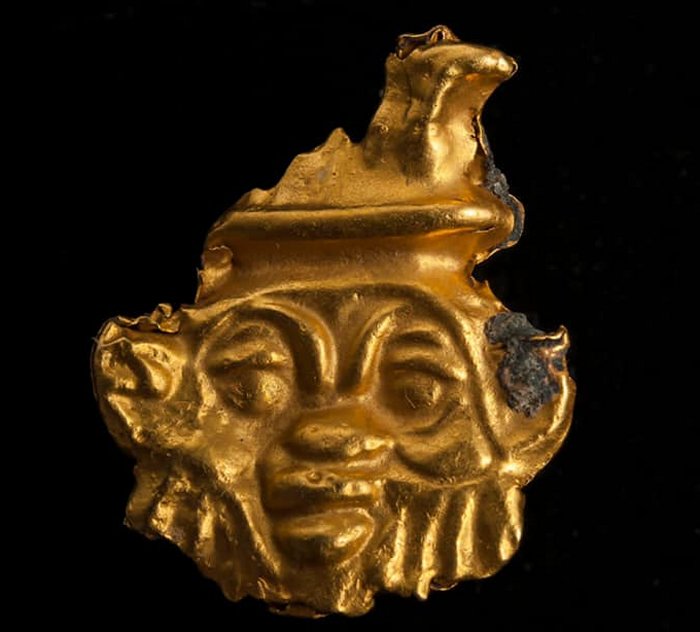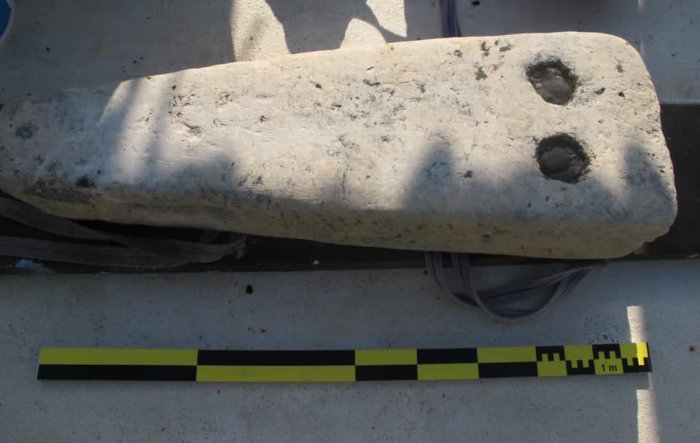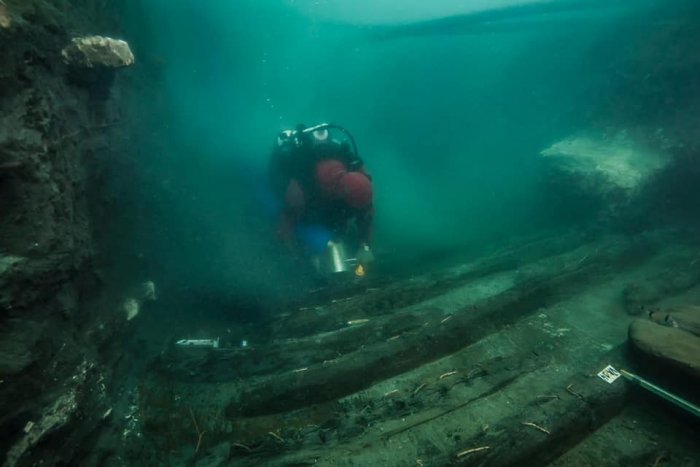Conny Waters – AncientPages.com – Once known as the Kingdom of Cleopatra the ancient underwater city of Heracleion has revealed more of its many archaeological treasures. The 2,700-year-old submerged city has long been of interest to underwater archaeologists who previously made incredible finds while examining this historical site.

Credit: Egypt’s Ministry of Tourism and Antiquities
Located in Abu Qir bay in Alexandria, Egypt archaeologists have previously uncovered the remains of a large settlement, a temple, shipwrecks, and a collection of coins and jewelry.
As AncientPages.com reported earlier a sophisticated scanning and archaeological surveying device, the mission discovered that the city of Canopus is larger than previously thought.
In 2019 scientists discovered a shipwreck of a 13 meters long sunken ship lying on the sea-bed. Inside it was a collection of coins and pots.
During a recent underwater mission conducted by the Egyptian-French mission, and led by the European Insтιтute for Underwater Archaeology (IEASM) archaeologists found remains of a military vessel and a funerary complex.
According to Egypt’s Supreme Council of Antiquities, the military vessel sank receiving huge blocks of the famed temple of Amun in the second century B.C.

Credit: Egypt’s Ministry of Tourism and Antiquities
“The ship was to be moored at a landing stage in the canal that flowed along the south face of the temple, when it was totally destroyed during a cataclysmic event. The fallen blocks have kept the precious naval remains pinned to the bottom of the deep canal along with the debris of the sanctuary,” Ahram Online reports.
Finding submerged ships as old as this one does not happen often, French archaeologist Franck Goddio explained. Goddio who began excavating the ancient city in 1998 thinks it is one of the most unique sites in the world. When researchers uncovered the lost Kingdom of Cleopatra they were astonished to see several submerged artifacts remained largely intact.
Scientists think that the entire city was completely submerged, along with all the artifacts, statues, columns, and other beauties of the palace of Cleopatra.

Credit: Egypt’s Ministry of Tourism and Antiquities
Before being submerged, and prior to the founding of Alexandria by Alexander the Great in 331 B.C. Thonis-Heracleion (the Egyptian and Greek names of the city) was the central gateway between the trade networks of the ancient Greeks and the ancient Egyptians on the Mediterranean Sea. There are most likely several more shipwrecks resting at the bottom of the sea.
The one discovered now is shows it was “built in the classical tradition and relied on long mortise-and-tenon joints and a well-developed internal structure. However, at the same time, it also features ancient Egyptian construction techniques. It was a rowing ship that was equally provided with a large sail as evidenced from its mast step of considerable dimensions.
This longboat was flat-bottomed and had a flat keel, quite advantageous for the navigation on the Nile and within the delta. Some typical ancient Egyptian shipbuilding features, together with the evidence of wood reuse, indicate that the ship was built in Egypt. With a length of more than 25 m, it had a length-to-breadth ratio close to six to one,” Ahram Online reports

Credit: Egypt’s Ministry of Tourism and Antiquities
During the late Pharaonic dynasties, Greeks were allowed to settle in the city which explains why there is a large Greek funerary area, all covered with rich donations in part of Heracleion. Before the catastrophe, ancient Greeks built their own sanctuaries close to the huge temple of Amun.
See also: More Archaeology News
Important remains of the temple of Amun slipped into the deep canal during a land slide caused by a land liquefaction phenomenon. They were discovered in a pristine state of preservation. They are the witnesses of the richness of the sanctuaries of this city, now located under the sea seven kilometers from the present coast of Egypt.
Thonis-Heracleion the largest Egyptian port on the Mediterranean Sea was unfortunately not meant to survive., Several earthquakes, followed by tidal waves, triggered land liquefactions, causing a 110 square kilometer portion of the Nile delta, with the cities of Thonis-Heracleion and Canopus, to collapse into the sea.
Written by Conny Waters – AncientPages.com Staff Writer





